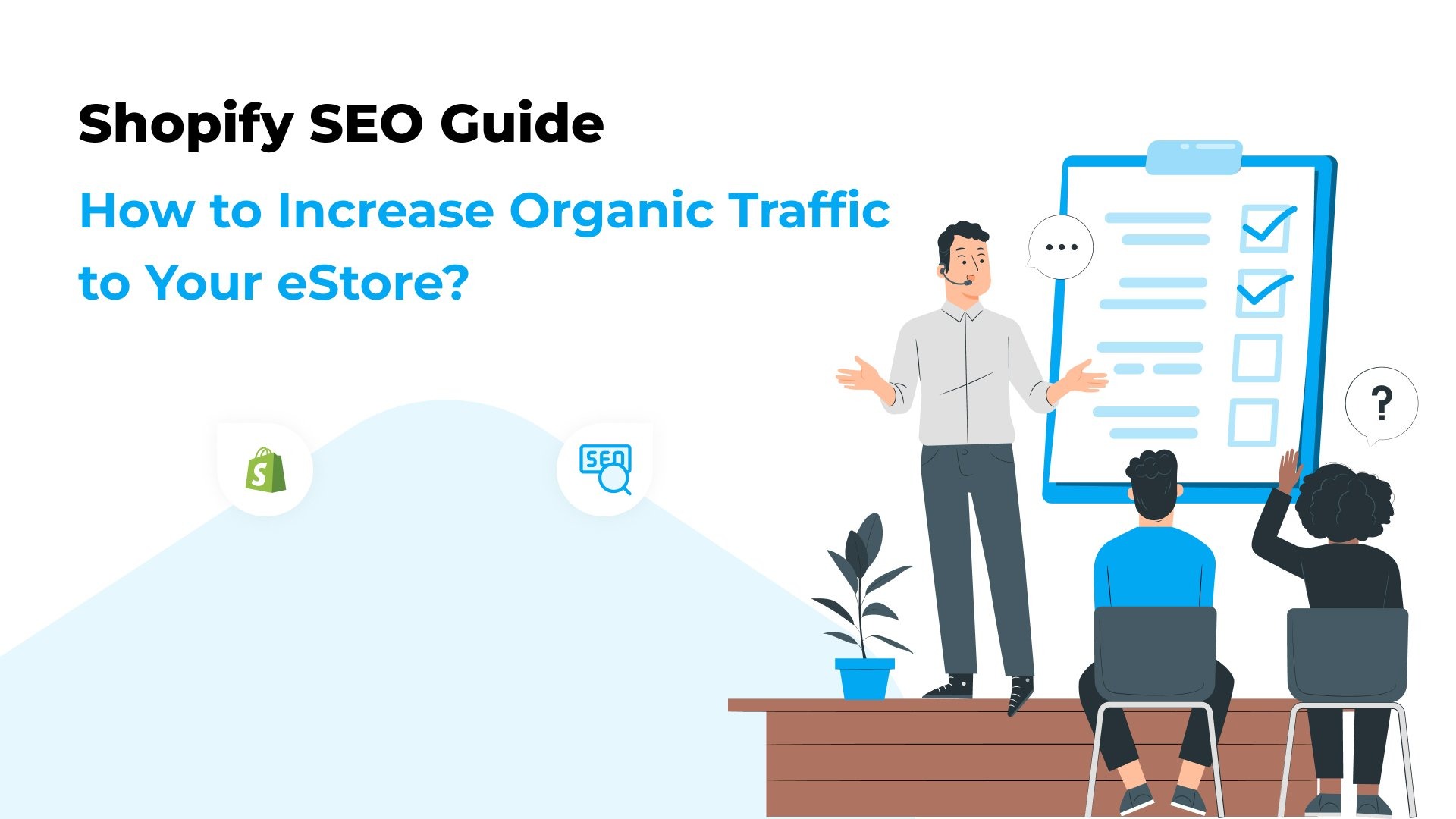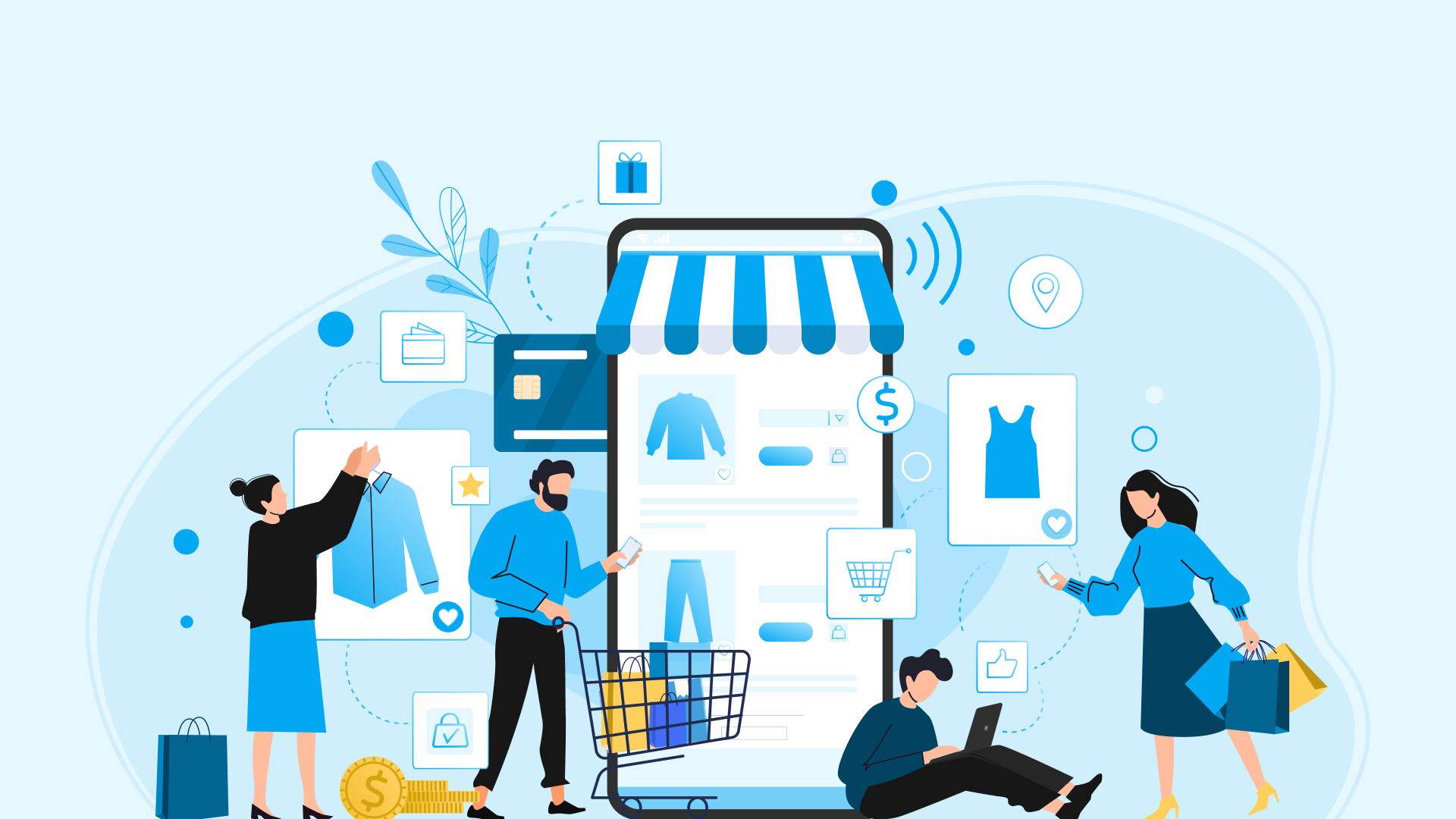- Introduction
- What is Shopify SEO?
- What are some benefits of Shopify SEO?
- Some common Shopify SEO mistakes & Tips To Optimize
- What Are Some Tips For Improving Shopify SEO?
- Site Speed Optimization
- Leverage Content Marketing
- Internal Link Building
- Define Your Store Structure
- Search For The Best Keywords for Your eCommerce Shop
- Place Keywords Strategically Across Your Website
- Improve the Ranking of Collection Pages With Resources
- Build Authority Through Blog Posts
- Remove Duplicate Content
- Improve Your Website’s Navigation
- Optimize Your Shopify Store Images
- Create an Optimal User Experience
- Make Your Product Titles And Descriptions Unique
- Include Rich Snippets To Your Website
- Build Backlinks To Your Shopify Store
- Integrate Google Analytics on Shopify Store
- How Can You Measure The Success of Your Shopify SEO efforts?
- Wrapping Up The Shopify SEO Guide
Introduction
Getting your website ranked in search engines is almost as important as finding the right store location.
There’s nothing more frustrating for a consumer than finding a shop that is hard to find.
Most of the time, people wouldn’t spend time searching for a store to buy from; instead, they would look for the ones that can have easy access and which they can locate without even making much effort.
The same is the case with customers shopping online. Most people who are shopping online are impatient.
People will look to shop or click on the websites they find on the first five pages of search engine results.
There is always a perception in people shopping online that the sites that usually rank on the top results and are often visited by people are the trusted ones.
Hence when your store ranks high on the search engine, chances are that people will be visiting your store, which will again contribute to increased traffic on your website.
The more traffic you have on your website, the higher the chances you will get conversions and increased sales, and your visitors will turn into loyal customers.
But what’s the secret to ranking your stores on top results of search engines?
While there is no secret, one of the best and most cost-effective ways to rank higher on search engine page results (SERPs) is Search Engine Optimization (SEO)!
In this article, we will talk about how effective Shopify SEO is for the success of your Shopify store.
What is Shopify SEO?

Shopify SEO is a set of SEO tactics that help you to rank your store higher on the SERPs organically.
Shopify SEO will enable you to conduct activities that will improve the current store and solve all the problems that cause decreased web traffic and reduced sales.
An effective user experience or meaningful content can both be achieved through these techniques.
Compared to paid advertising, SEO can generate more revenue cost-effectively. The more visibility your online store receives by showing up on Google’s front page, the more customers you’ll attract.
SEO-focused marketing is essential for every business since it can help you increase sales and compound through long-term strategies.
SEO focuses on organic traffic, so your home page may rank high on Google, or you may create content specifically for certain keywords that will help people discover your content.
What Are Some Benefits of Shopify SEO?
Through SEO practices, digital marketing agencies have been able to provide opportunities to their clients to generate higher revenues through their Shopify stores which is why businesses these days look out for the Best Search Engine Optimization Company to handle their SEO services. Below are some of the benefits of Shopify SEO.
Free Form of Advertising
Unlike paid advertising methods like PPC, SEO is a free form of advertisement that, instead of dedicating huge portions of your annual budget, helps you focus on improving your Shopify store’s performance on the internet for free. SEO provides an easy and cost-effective means for your business to get found by potential customers easily on search engine result pages. Thus with the help of SEO, this will help your product to reach a large audience without you needing to pay anything and getting increased customer growth.
Improves Page Ranking
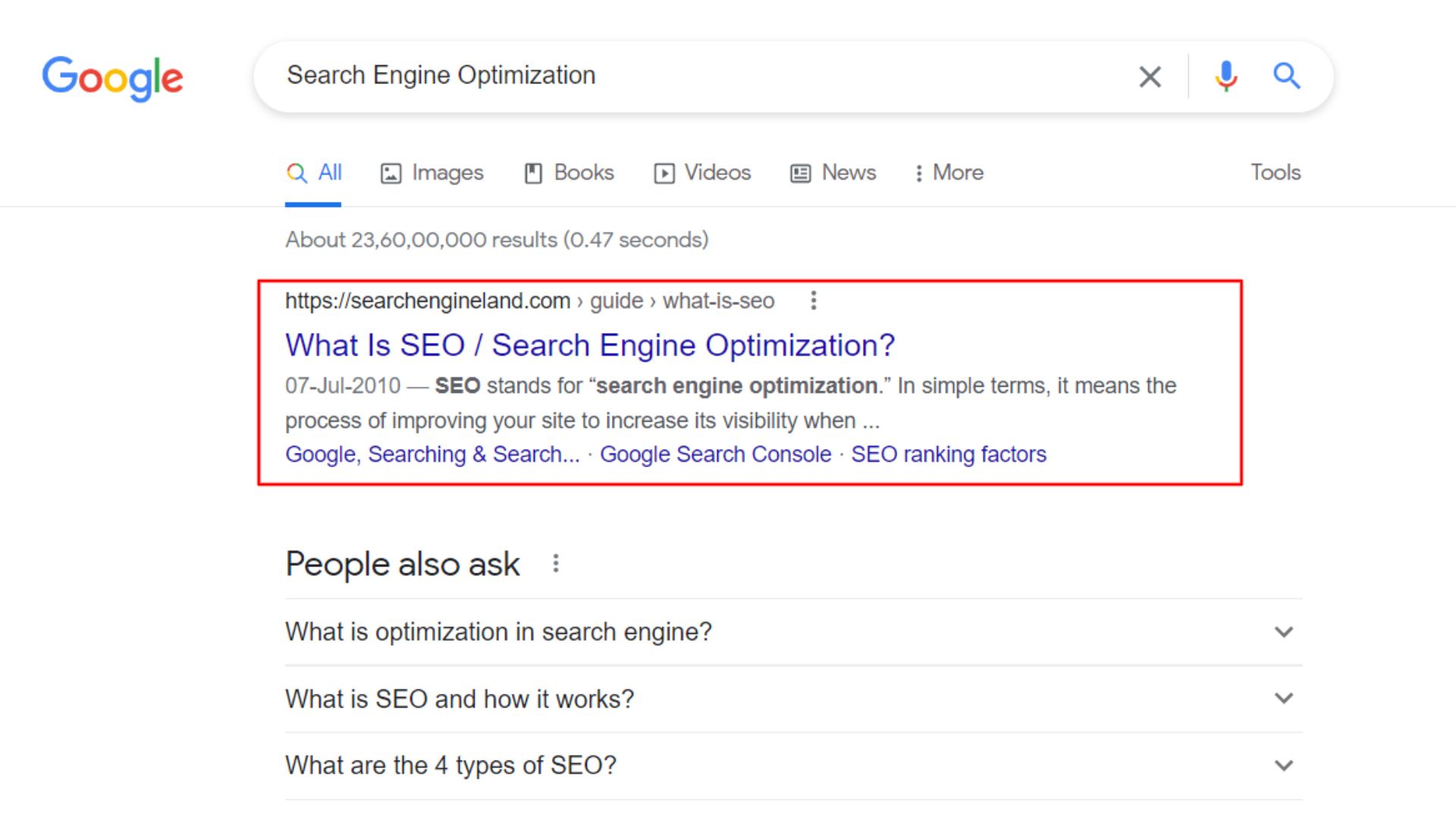
People looking to buy products online will generally find it easier to shop for products from the website and the stores that rank among the top results on any search engine unless and until they’re your loyal customers looking to purchase from your store. While in the current discussion, we may not want to talk about loyal customers, so considering other types of customers, you will have to work on making your store easy to spot; hence, SEO is something you can rely on. Implementing SEO in your marketing strategies can increase the chances of ranking your Shopify store higher on the SERPs.
Increase Efficiency and User-Friendliness
One of the key things that SEO includes as a practice is making pages user-friendly and efficient. Google will only rank your store if it understands what products you are dealing with. For example, your company specializes in “Dog Food products” along with other animal products, and to make sure that your stores rank for the same, you will have to use related keywords, which will help you rank at the top when people search out for dog food products. Also, you need to ensure your store loads faster, or your slow-loading site can become the ultimate reason for the increased bounce rates, reducing your chances of ranking on SERPs.
Relevance to People’s Needs
Again when we consider the dog food example, there are other products also that a store may deal with when they are selling products related to other pet animals like cats, fish, birds, etc. Search engines connect the keywords on your web page to the query they typed to determine whether your web page is relevant to someone’s search. It is, therefore, essential that you use relevant keywords in any content you are writing to rank on Google and that you also use synonyms or related keywords to be spotted by your potential audience on the top results for your products. With SEO, you can ensure it.
Keeping Your Competitors Closer
Learning from your competitors is the best way to be competitive and outrank your competition. Based on what they produce, you can create content that will complement theirs, and there is also the scope of doing things better than theirs and also gain a competitive edge. There are various tools available that help you to spy on your competitors to take a look at SEO practices they have been implementing so far and know what’s working for them and what’s not. This will help you plan your strategies and make changes to the ones you have formed earlier.
Increase Sales

SEO helps your business gain exposure and increased traffic to your site, ultimately boosting your customer growth and sales. The ultimate goal of every eCommerce business is to maximize profit. You cannot maximize profit when sales are on a downward trend. So the right SEO strategies will allow you to rank higher on Google, which will ultimately result in more people having exposure to your brand’s products, increasing sales of your products.
Also read: Enhancing Your Shopify Store’s Design
Also read: 10+ Best Shopify Speed Optimization Apps
Some common Shopify SEO mistakes & Tips To Optimize
You are probably wrong if you thought just implementing SEO practices would get you the associated benefits.
Most of the time, people miss out on the right way of doing SEO, which often leads to a wastage of time and resources, and even after that, people don’t get the expected results, and again, this has nothing to do with thinking that – is WordPress or Shopify better for SEO.
Below is a list of common Shopify SEO mistakes and tips you can avoid for better results.
Missing Out Site Search Option
Many Shopify stores tend to overlook the important feature of the Site Search option on their websites. The site search option on your website will make it easy for your website visitors to search for the products they want without the hassle of visiting every page of the website. Include a site search option if you don’t want to lose customers simply because they could not search for the product. Most of the themes include the feature of a search option, but the theme you select doesn’t have one; you can look out for plugins that will provide you with the search option feature for your website.
Cross-Device Incompatibility

Content on the Web must be cross-device compatible, which means it must work on different devices like computers, smartphones, and tablets. The stores that do not support cross-device compatibility will usually face a loss of web traffic along with an increase in bounce rates as people who will visit an eCommerce store; no two devices will be of two people will be the same. The ones who find your website isn’t user-friendly on their devices will usually click the back button.
Slow Page-Loading Speeds
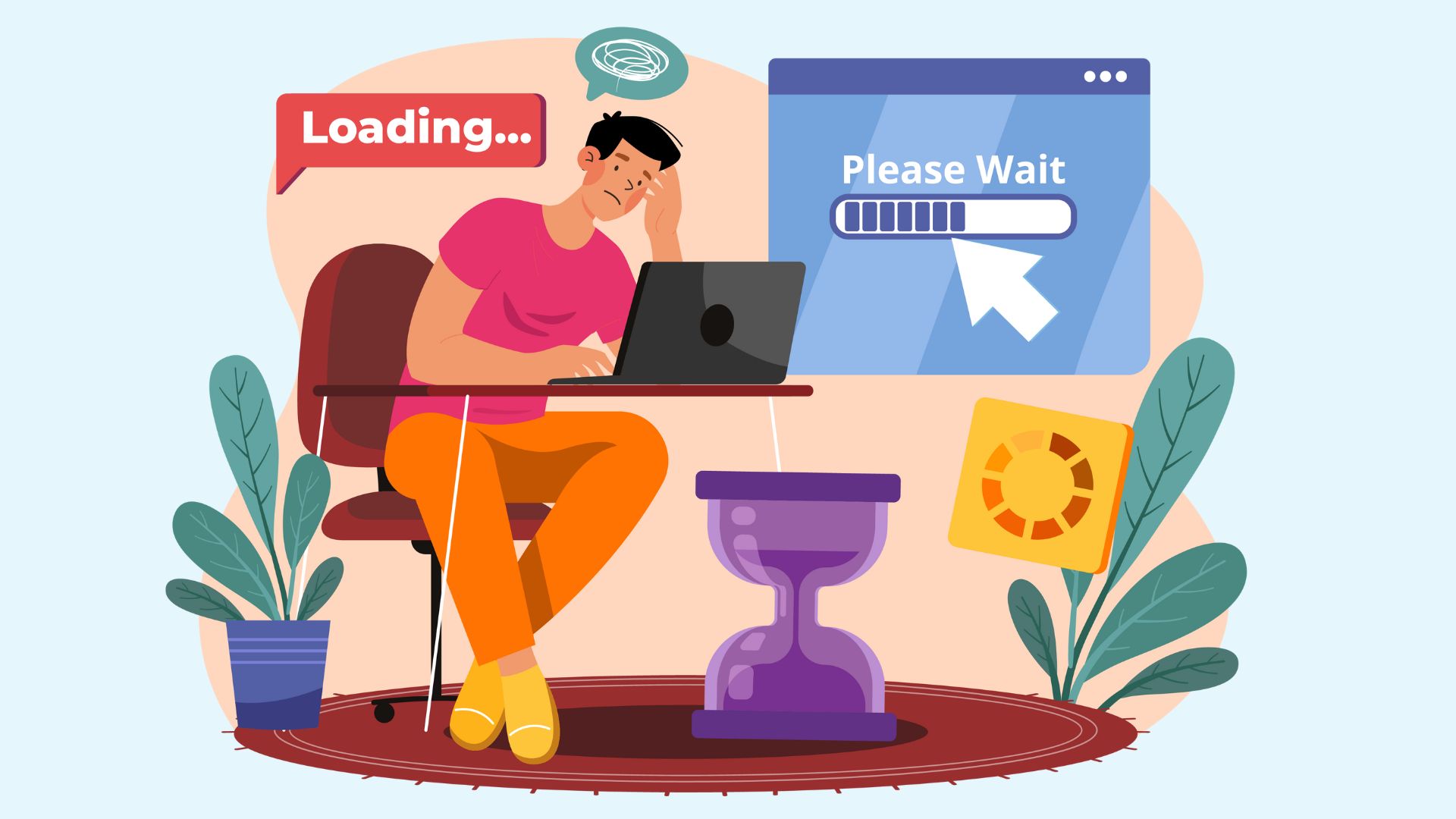
Nobody likes a slow-loading website. It is obvious that when your visitors find that your website takes forever to load, they will surely go away from your website. Slow-loading websites are usually not a good sign for businesses operating online. Usually, people going online are buyers, so be patient while you take time to load. Increasing bounce rates can affect the search ranking heavily and even the efforts of your SEO activities. Consequently, your website needs to speed up to meet the needs of impatient and hurried customers. You can read our Shopify Speed Optimization Blog, where we have suggested everything regarding the loading speed of a website.
Overcrowding Your Online Store With Plugins/Apps
Shopify provides its users with a wide range of apps and plugins. Users can integrate these apps and plugins into their websites to add unique features and increase their websites’ functionality. Most of the time, businesses stack up their website with plugins and apps that are not in use. Installing unnecessary plugins and apps can create problems like slow-loading websites on your Shopify store. A better practice is to install the necessary apps only when you need them rather than stuffing them.
Using Low-Quality Images
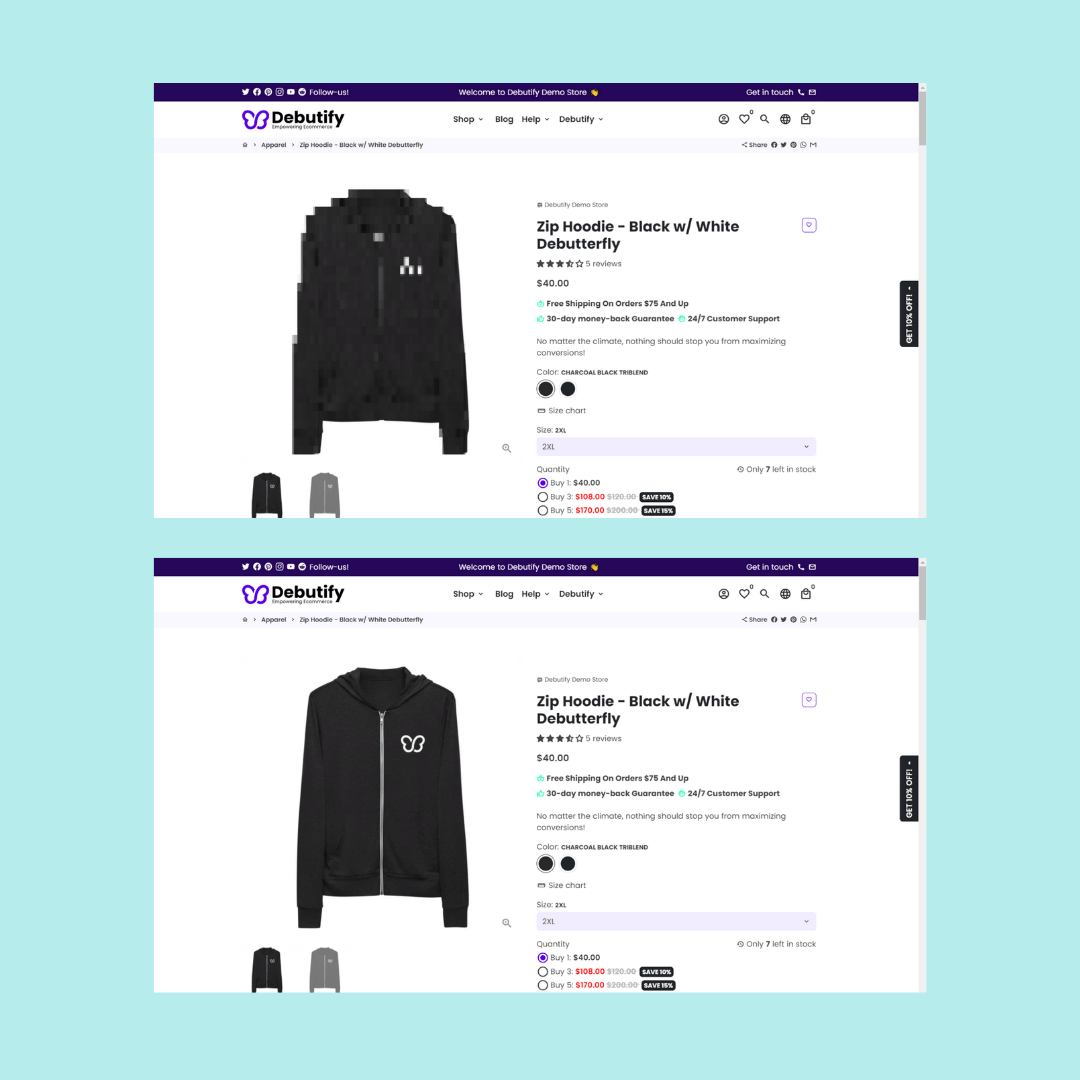
Image Source: RECONVERT
Product images are the soul of a product on an eCommerce website. They are the most important elements that will portray how your products will look on the website, as your customers won’t be able to touch or feel them virtually as they would in a physical store. You can severely affect the conversion rate when you upload blurry, low-quality images to your eCommerce store. If your images are not clear and attractive, you will have a higher chance of losing potential customers. Hence, ensure you’re uploading good-quality images that are clear and look appealing on your website.
Inappropriate and Insufficient Product Descriptions
Good product descriptions are equally important as having good quality images in the eCommerce store. You can encourage customers to click the buy button by writing an interesting and appealing product description. Also, when we talk about the importance of product descriptions from an SEO perspective, they are a great way to include related keywords that will help you improve your SEO. Hence, writing compelling product descriptions that include relevant keywords to enhance search ranking on Google and properly styled fonts that are visible and match your website.
Using an Aggressive Color Scheme
Website designs are heavily influenced by the colors that are used in them. A website with an attractive and soothing color scheme will attract visitors, while on the other hand, a website with sharp, high-contrast colors may displease your audience and result in them leaving your website. Hence here, it becomes very important to take into consideration the color scheme of your website. Your website should not contain too many colors as it may not look appealing to the customer and distract him from your products. Make sure you choose colors that portray your brand’s personality and image. For instance, you can Google about various colors that may go with your brand or the niche your business serves.
Failure to Configure The Checkout Process
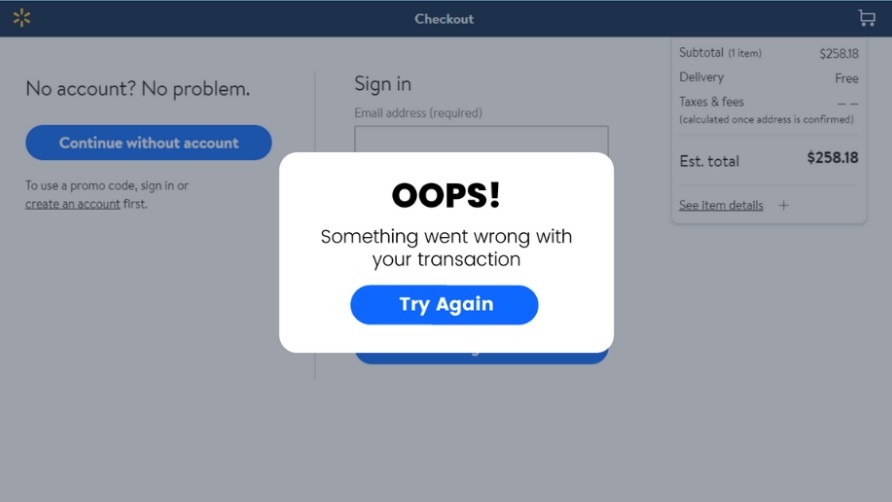
Image Source: RECONVERT
Many eCommerce store owners forget to customize their checkout page to match the store’s design, despite being one of the most important pages. Your customers might even quit your website if the checkout page differs from the rest of the website. Similarly, if the checkout page takes too long to load, it’s more likely that your customers will leave the website, which will result in losing them. In this sense, your checkout process must be optimized to load faster.
What Are Some Tips For Improving Shopify SEO?
Are you done with understanding the mistakes you were making with your Shopify SEO?
Great!
But to ensure you’re not missing out on including anything in your SEO practices, we have a Shopify SEO checklist that you should check out for a perfect SEO strategy!
Site Speed Optimization
Page speed is a signal used by search engines to rank websites in search results, with fast-loading sites given preference over slower ones, as a fast site leads to a better user experience. To check whether your site is slow or not, you can visit Impact Calculator and check whether your site is slow. When you discover that your site is slow, you can try reaching out to a Shopify SEO agency that can assist you with improving the site speed of your Shopify store.
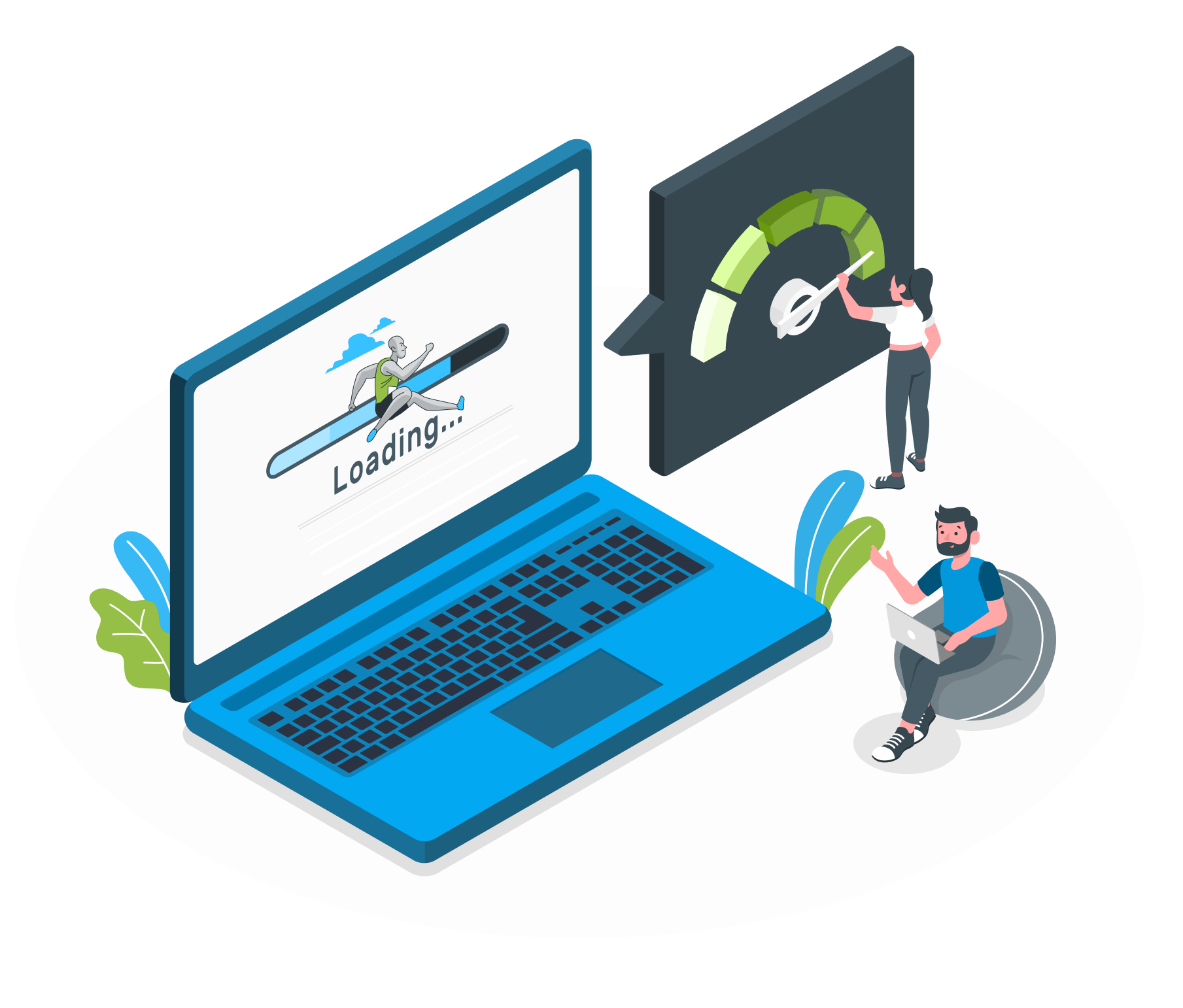
Leverage Content Marketing
A content marketing strategy is part of an overall SEO strategy. Utilizing content marketing allows you to create quality, user-focused content from a search engine optimization perspective. Using SEM and SEO to earn new visitors can be helpful, but producing useful content can keep them engaged. Additionally, content marketing aids your search engine optimization (SEO) by building trust and relationships with your audience.
Internal Link Building
The utilization of a comprehensive inside linking system inside your Shopify store is also very important and significant in your Shopify SEO strategy. In addition to connecting your content, internal links provide Google with information about how your website is structured. Your site can establish a hierarchy using them, allowing you to provide more link value to the most important pages and posts than to the less important ones. By connecting your website internally, you can boost your SEO and increase your site’s traffic, resulting in more sales.
Define Your Store Structure
It is essential to have a good website structure so that your users can find the information they are looking for quickly. Search engines can also benefit from your site being understood, helping you rank higher. Organize your categories by putting main categories at the top and subcategories below, which are later followed by-products. For instance, if you own an online store that sells products related to animals and you are selling Pet Food. Therefore, you may have subcategories, such as “Dog Food” or “Cat Food,” under the Pet Food category. This way, you will have to work on other pages such as Contact Page, About Us, Home Page, etc., which is important from Shopify’s SEO point of view to earn more from the web traffic.
Search For The Best Keywords For Your eCommerce Shop
One of the major parts of the Shopify SEO activity is to include important and relevant keywords. You will have to find the best keywords related to the products you are selling to rank yourself on the top results of the search pages and increase your sales. Getting the best keywords for your Shopify SEO strategy is to use tools that help you with keyword research to identify the best keywords for your business. While again, this will require technical expertise, so in that case, you can hire a digital marketing company to provide Search Engine Optimization services for your assistance with Shopify SEO services.
Place Keywords Strategically Across Your Website
After creating a list of all the important keywords you will use in your Shopify store, and then you next have to decide where to place it. It would be best to strategically place all the keywords you want to rank for on the website space in different sections. The best places to add your keywords to your stores are meta titles, headlines, blogs, product descriptions, product pages, URLs, and many more. All this work must be done in the backend of your Shopify store, and with the assistance of the Shopify SEO agency, you can ensure all these things are done properly.
Improve The Ranking of Collection Pages With Resources
Collection pages generally show all the categories of products you sell in your store. Building links to the collection page will give better results than the individual product pages. Not just from the ranking perspective, but this will also increase the visibility of all the products on your Shopify store to the visitors of the website who visit seeing your page being ranked on the top results. You can show your entire inventory for a given category when ranking a collection instead of a product page. This way, they have more options than sending them to a single product page with only one option.
Build Authority Through Blog Posts
Creating a blog is important not just for Shopify’s SEO strategy, but also to create authority. Having blogs on your website that are related and relevant to products you sell, gives a sense of authority to your Google which is going to increase your ranking on the search engine along with traffic that you have gained to your blog as part of your Shopify SEO strategy. You can make your website authoritative by providing useful and well-written content that answers all the questions people have about a particular product. Then adding internal links of the relevant product or collection pages to this content will increase the chances of people visiting them and buying your products as a solution to their problems which will lead to increased sales.
Remove Duplicate Content
A duplicated page confuses Google, making it hard to rank in the top results among identical pages. There are multiple product collection pages on most eCommerce sites. Your rankings will be adversely affected if Google indexes the wrong page. The only way to avoid duplicate content is to no-index duplicate pages with canonical tags. Google understands the canonical tag as a way of telling which page is the most important and the one you want to rank for. With a canonical tag, you’d let Google know that a collection’s main page is the one to crawl rather than the subpages.
Improve Your Website’s Navigation
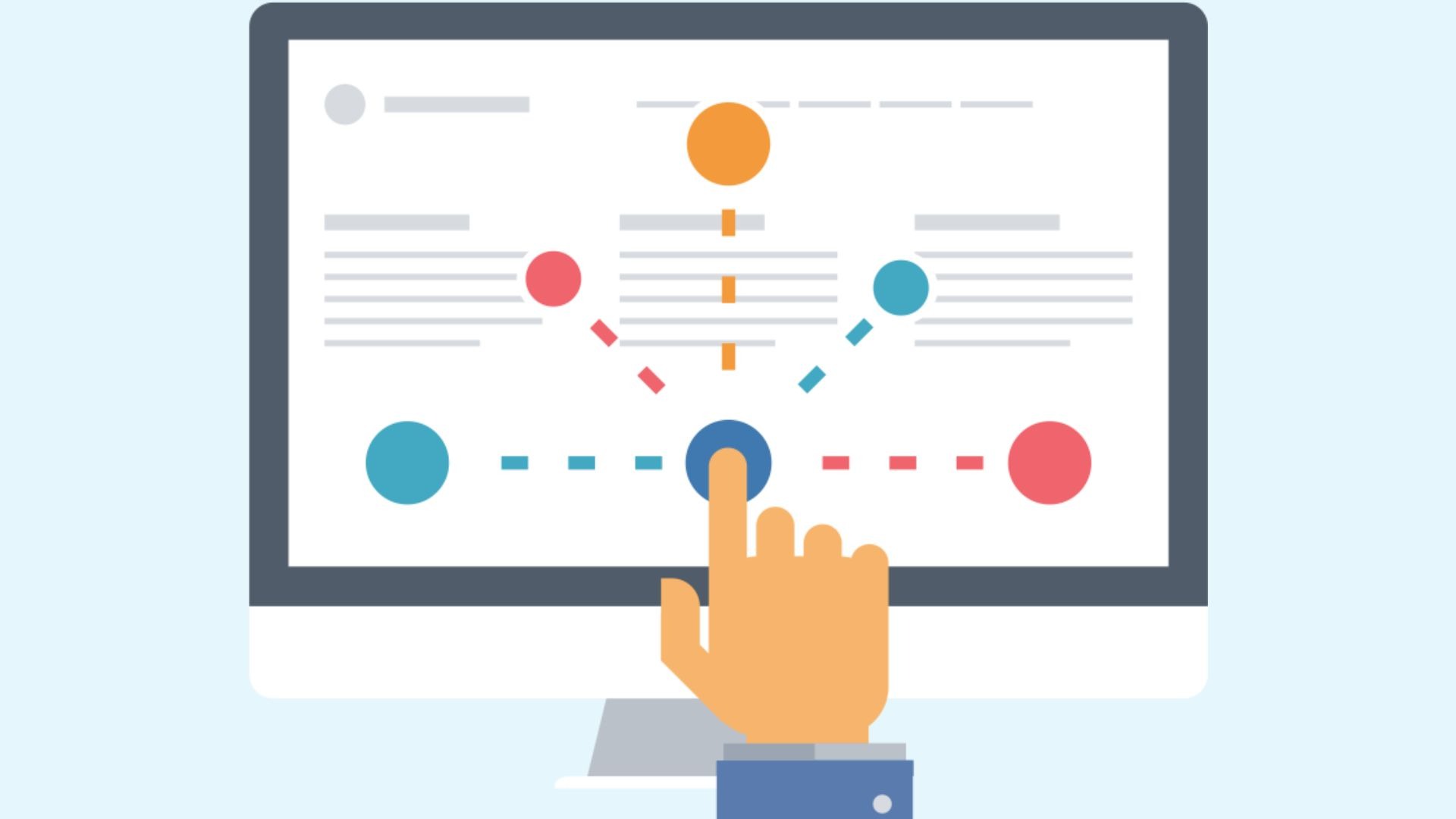
Google considers the ease of navigation of a website as one of its key metrics before ranking it. A good navigation structure keeps users on your website longer, enhancing your Shopify store rank. This is because websites that are easy to navigate have higher user engagement and lower bounce rates. Therefore, ensure you optimize your website’s content, pages, and structure to rank higher in Google’s search results.
Optimize Your Shopify Store Images

Search engine algorithms not just look at the content and product descriptions on your page; they also consider the images that are used in your store. Adding relevant alt text to your images is important from the SEO point of view as it is considered to be an important ranking factor. While you are adding alt texts to your images, make sure that it contains your keyword phrase that is relevant to the image. The easier it is for the algorithms to track your website, the greater the chance of your website ranking higher.
Create an Optimal User Experience
Among the most important Shopify SEO tips that you need to take care of, this is the one that you can miss out on. Businesses operating online need to take care that the user experience of their website is optimal. The easier your Shopify store is to operate, the more your visitors will spend on it. For the optimal user experience of your site consider meeting the requirements of a user-friendly website. Consider choosing a quick and responsive theme that loads well on mobile devices and try to avoid bulking your store with unnecessary apps.
Make Your Product Titles And Descriptions Unique
This is the one you can miss among the most important Shopify SEO tips you need to take care of. Businesses operating online must ensure the optimal user experience of their website. The easier your Shopify store is to operate, the more your visitors will spend on it. For the optimal user experience of your site, consider meeting the requirements of a user-friendly website. Choose a quick, responsive theme that loads well on mobile devices, and avoid bulking your store with unnecessary apps. Also, consider making your description and Shopify product title SEO optimized.
Include Rich Snippets To Your Website
Rich snippets are structured slices of information added to content to help search engines and website visitors understand the content. They can influence the way your website performs in search results. Star ratings, authors, prices, and various visual clues that tell you about content are included in rich snippets. Rich snippets allow search engines to categorize and index content more efficiently because they provide additional data; hence, adding them will be effective for Shopify SEO. Again adding Rich snippets will require technical help, so you can ask the Shopify SEO agency to consider adding them to your Shopify store.
Build Backlinks To Your Shopify Store
Backlinks are an essential element of a successful SEO strategy for your store. Link building requires outreach, and relationship building with brands is one of the best ways. By building relationships with brands, you can approach them to provide backlinks to your website. One more way to get backlinks to your website is to create quality content where brands will provide backlinks to your content. Along with getting backlinks, you need not forget that internal linking shouldn’t be ignored where you will be linking to one of your blog posts from blog posts and collection pages other than yours. Links of both types are effective in boosting a page’s ranking. Google considers you more credible if you have more links.
Integrate Google Analytics on Shopify Store

With Google Analytics, you can track visitors, sessions, and other customer behavior in your store. The Google Analytics tool offers more accurate information since it distinguishes between regular and unique pageviews compared to Shopify’s Analytics. Therefore, since Shopify Analytics data cannot answer all your questions about your store’s performance, integrating Google Analytics with your Shopify store becomes important.
How Can You Measure The Success of Your Shopify SEO Efforts?
Just preparing and working on your SEO strategy won’t give your result.
You also need to ensure that all the SEO practices and activities you have conducted so far are worth it, and for that, you need to evaluate what you have been doing so far to know what worked and what didn’t.
Keep reading further as we inform you about how you can measure the success of your Shopify SEO efforts.
Evaluating Your Current Conversion Rate on Shopify
The best way to evaluate your current position is to check your conversion rates. By dividing your visitors by your purchases, you can see how you stack up against your previous performance or your industry’s average. You can improve your conversion rate by identifying your Shopify conversion rate and achieving your growth goals. You can measure how many people visit your website or shop at your business and how many make a purchase. A Landing Pages report in Google Analytics will give you the current conversion rate for specific pages on your website. Additionally, the analytics and dashboard in Shopify can help you determine your website’s conversion rate.
Evaluate Organic Revenue & Transactions
Revenue is one of the most important KPIs for tracking your eCommerce SEO efforts. SEO-oriented activities that will help you generate revenue. Keeping track of how much revenue is attributed to organic traffic can help you understand your SEO efforts’ success. Using Google Analytics, you can track and even compare the performance of your SEO activities with other marketing strategies. Along with evaluating revenue, you can also evaluate the transactions. While both are different KPIs, just like revenue; even transactions are part of marketing strategies and determining how effective your SEO campaigns are.
Number and Volume of Non-Branded Keywords
SEO professionals need to work on getting good at tracking branded and non-branded keywords. This is an important fact that, as a business, you need to rank for keywords that relate to your products or the problems your products solve in eCommerce, in particular. Google Analytics Search Console integration is one of the best ways to track the number and volume of effective non-branded keywords. You can export the data or use advanced search filters to remove branded keywords from the search results.
Fluctuation in Keyword Rankings
When working on SEO campaigns, tracking your target keyword positions is one of the best ways to keep track of the campaign’s progress. The search engine rankings of certain words should be tracked, as should those of words you want to lower. Before you start the SEO campaign, you must establish benchmarks. This will allow you to compare and determine whether the SEO effort was successful or not after the SEO campaign has been implemented.
Organic Total Users vs New Users
You can find a lot of information about your site’s audience based on Google Analytics, from the age of your visitors to the flow of traffic around the site. You should pay attention to how many new and returning visitors you have on your site. This is a key aspect that is often overlooked. You want to check whether the organic users you received through your SEO activities return. Also, you need to track the sources of new visitors to your store that either come through SEO efforts or are the result of paid advertising activities and compare both.
Core Web Vitals
The Core Web Vitals measure the quality of the page experience that Google has stated as a ranking factor. Usually, a slow-loading store can become a serious issue for a business and affect its overall online sales. The important metrics of Core Web Vital are the largest Contentful Paint, First Input Delay, and Cumulative Layout Shifts.
- Largest Contentful Paint (LCP): LCPmeasures loading performance. It is suggested that for a better user experience, LCP should take place within 2.5 seconds of launching the page.
- First Input Delay (FID): FID measures interactivity. An FID of 100 milliseconds or less is recommended for a good user experience.
- Cumulative Layout Shift (CLS): CLS measures visual stability. Ideally, pages should have a CLS of 0.1 or less.
Also read: eCommerce PPC Management Agency
Also read: Choosing The Right Shopify Theme
Also read: Expert Tips To Skyrocket Your Sales
Wrapping Up The Shopify SEO Guide
Shopify is an ideal platform for establishing online store businesses. Its built-in features, combined with SEO tools and our tips in the guide, will help you develop a Shopify SEO strategy that lets you perform better for your customers. You’ll be able to boost your eCommerce store’s visibility, convert prospects into customers, and raise sales with the help of our suggestions.
If you are looking for someone to assist with the Shopify SEO for your online store, then you can surely reach us at Huptech Web, as here, our Shopify developers and SEO experts will use their technical expertise and years of experience to build unique SEO strategies to make the most of your online presence through will able to generate higher revenues through your Shopify store.
